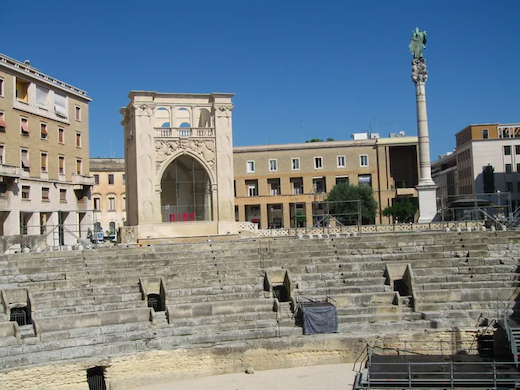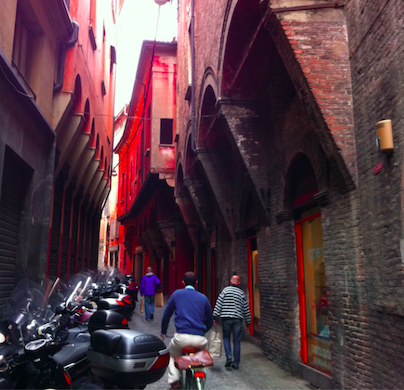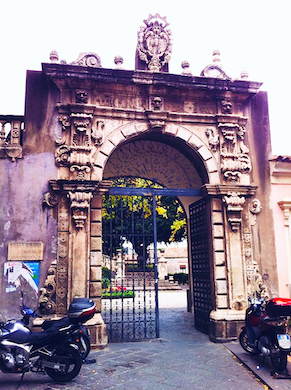Five Italian Cities That Offer Quiet Fall Allure
Off-radar Italian favorites include Bologna, Bari, Lecce, Catania, and Trieste.

On an Italian island shore in an era somewhat far away, a nice lady quietly proclaimed that taking a holiday anywhere else but Italy feels like a mistake. Could anyone who has been there really disagree? After all, it may not be possible to tire of the charms of Tuscany or the beauty of the Amalfi Coast — and then there are Rome, Venice, and Florence.
Yet those stars shine so bright that they tend to obscure other sparkling lights on the Italian stage. As I’ve written before, there are plenty of hidden gems with many delightful things to discover in all of them — and with cooler temperatures and crisp light, autumn is one of the best times to do so. Five of my off-radar Italian favorites are Bologna, Bari, Lecce, Catania, and Trieste.
Bologna, capital of the Emilia-Romagna region, packs much of the visual punch of nearby Florence, minus most of the tourists. The world’s oldest university, dating to 1088, is still going strong here. This very old city combines the elegant assurance of Milan with some of the more brooding and mysterious qualities of Venice. There are nearly 50 miles of porticos, so even when it is raining, you’re basically covered by all those lovely colonnaded arcades.
Culturally, there is much to take in, like the Museo di Palazzo Poggi art and science museum, an evocative Jewish Museum, and the Civic Archaeological Museum. Yet Bologna is very much a modern city, too. The locals move fast like the Milanese, slowing down perhaps to enjoy the rich food for which the city is justly renowned.

The New York Sun/Anthony Grant
The town center is a 350-acre repository of Renaissance and Baroque architecture, and the medieval inventory includes the Towers of Bologna. Climbing up the 334 feet of the Torre degli Asinelli is a pretty good way to work off plates of egg pasta tagliatelle and authentic Bolognese meat ragu.
Bari and the smaller Brindisi are considered gateways to Puglia, and each has a decent international airport. As the capital of this sunny southern region, though, Bari has bragging rights on Italy’s longest seaside promenade. The winding lanes of Bari Vecchia, the walled old town, ooze authentic southern Italian charm and character. Wandering about means stumbling upon some of Bari’s foodie sights, such as cheerful ladies making the city’s signature orecchiette ear-shaped pasta. Foccacerias abound, turning out delectable thin-crust pizzas. For a more modern cafe and pub scene, the area between the old walls and restored Teatro Margherita, built on piles in the sea, is the place to linger.
There is no Instagram-ready laundry list of sights to check off in Bari, but there is an impressive Norman-Swabian castle on the perimeter of the old city and the cathedral is a triumph of the Apulian Romanesque. The patron saint of Bari is St. Nicolas — a basilica in his name has been standing since 1087, and you can see stone carvings made in the saint’s honor in many building facades in Bari Vecchia.
Sometimes called the Florence of the south, Lecce is an absolute jewel of a city on the heel of Italy’s boot. While its artistic treasures cannot equal those of its Tuscan sister, Lecce is definitely sunnier and has no shortage of gorgeous Baroque architecture. Naturally, there are ancient Roman ruins, too. The cultural links to ancient Greece in this part of Italy are very strong and you will see them in force at the Museo Sigismondo Castromediano, which boasts a knockout collection of ancient Greek vases.
The whole Salento peninsula — the southernmost part of Puglia — is a beauty to explore, from Gallipoli on the west side to dreamy Otranto in the east and many scenic coves in between, but Lecce is the provincial capital.
When talking about the cities of Sicily, passionate Palermo tends to steal the thunder, but Catania is an underdog to be reckoned with. It’s a historic and bustling place with an intense Baroque aesthetic and vibrant outdoor markets under the gaze of fiery Mount Etna, the biggest active volcano in Europe. The earth’s crust can get pretty angry in these parts, and in fact, Catania has been twice destroyed by earthquakes. The city today is a jumble of ancient ruins, Baroque buildings in varying states of preservation or decay, and more modern buildings. There is a second-century A.D. Greco-Roman theater, an ancient Roman forum, and numerous early Christian basilicas, too.

The New York Sun/Anthony Grant
Catania’s signature sight, oddly enough, is a fountain whose centerpiece is a small elephant made of black lava with an Egyptian obelisk jutting up from his back. Another attraction is simply Catania’s great location, being about equidistant from the resort town of Taormina to the north and Siracusa (Syracuse), with its fabulous ancient ruins, on the coast to the south. Palermo is the largest Sicilian city, but Catania-Fontanarossa Airport is Sicily’s busiest.
Yes, Trieste is in Italy, but in her book “Trieste and the Meaning of Nowhere,” the late British travel writer and novelist Jan Morris wrote that it is “so lacking the customary characteristics of Italy that in 1999 some 70 percent of Italians, so a poll claimed to discover, did not know it was in Italy at all.”
If many people still don’t realize that Trieste is in Italy, that is probably because for several centuries until 1918, when it was annexed by the Italians, this unusual city on the northern rim of the Adriatic was the main seaport of the Austro-Hungarian Empire. Today, Trieste is the capital of the Friuli-Venezia Giulia region, which borders Slovenia and with Croatia just 19 miles south.
The headquarters of Illy coffee was once a great Mediterranean port, and it is the perfume of nostalgia that lends it the special ambience that held Ms. Morris in its thrall. The grandeur has not faded from the vast central Piazza Unita d’Italia — which Slovenians still call Great Square — and a prominent statue of Sissy, Empress Elizabeth of Austria, is a reminder that Trieste owes much of its current gracious aspect to the glories of a now-vanished empire. The broad Trieste seafront is a good place to contemplate all this. Travelers can also consider a side trip to Venice, just less than two hours away by train.

